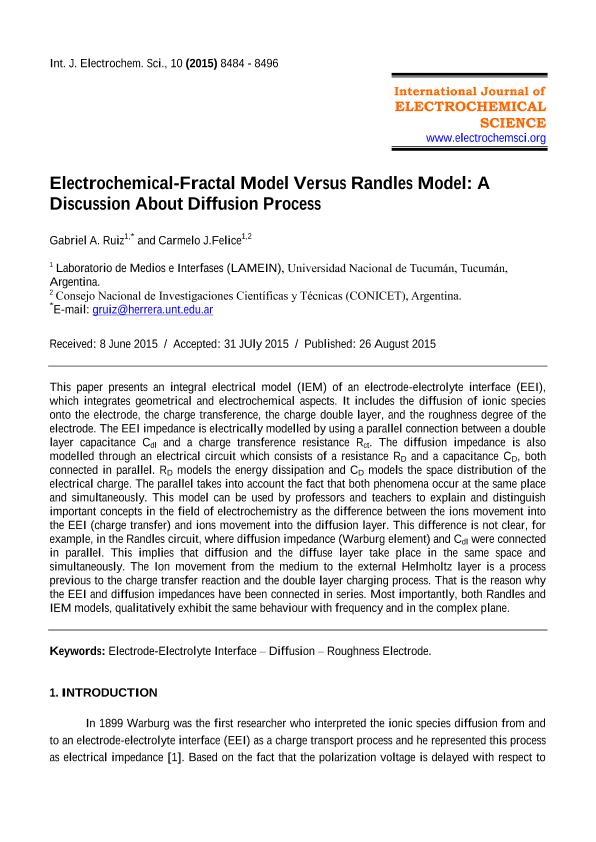Artículo
Electrochemical-fractal model versus randles model: a discussion about diffusion process
Fecha de publicación:
07/2015
Editorial:
Electrochemical Science Group
Revista:
International Journal of Electrochemical Science
ISSN:
1452-3981
Idioma:
Inglés
Tipo de recurso:
Artículo publicado
Clasificación temática:
Resumen
This paper presents an integral electrical model (IEM) of an electrode-electrolyte interface (EEI), which integrates geometrical and electrochemical aspects. It includes the diffusion of ionic species onto the electrode, the charge transference, the charge double layer, and the roughness degree of the electrode. The EEI impedance is electrically modelled by using a parallel connection between a double layer capacitance Cdl and a charge transference resistance Rct. The diffusion impedance is also modelled through an electrical circuit which consists of a resistance RD and a capacitance CD, both connected in parallel. RD models the energy dissipation and CD models the space distribution of the electrical charge. The parallel takes into account the fact that both phenomena occur at the same place and simultaneously. This model can be used by professors and teachers to explain and distinguish important concepts in the field of electrochemistry as the difference between the ions movement into the EEI (charge transfer) and ions movement into the diffusion layer. This difference is not clear, for example, in the Randles circuit, where diffusion impedance (Warburg element) and Cdl were connected in parallel. This implies that diffusion and the diffuse layer take place in the same space and simultaneously. The Ion movement from the medium to the external Helmholtz layer is a process previous to the charge transfer reaction and the double layer charging process. That is the reason why the EEI and diffusion impedances have been connected in series. Most importantly, both Randles and IEM models, qualitatively exhibit the same behaviour with frequency and in the complex plane.
Palabras clave:
Electrode-Electrolyte Interface
,
Diffusion
,
Roughness Electrode
Archivos asociados
Licencia
Identificadores
Colecciones
Articulos(INSIBIO)
Articulos de INST.SUP.DE INVEST.BIOLOGICAS
Articulos de INST.SUP.DE INVEST.BIOLOGICAS
Citación
Ruiz, Gabriel Alfredo; Felice, Carmelo Jose; Electrochemical-fractal model versus randles model: a discussion about diffusion process; Electrochemical Science Group; International Journal of Electrochemical Science; 10; 10; 7-2015; 8484-8496
Compartir




